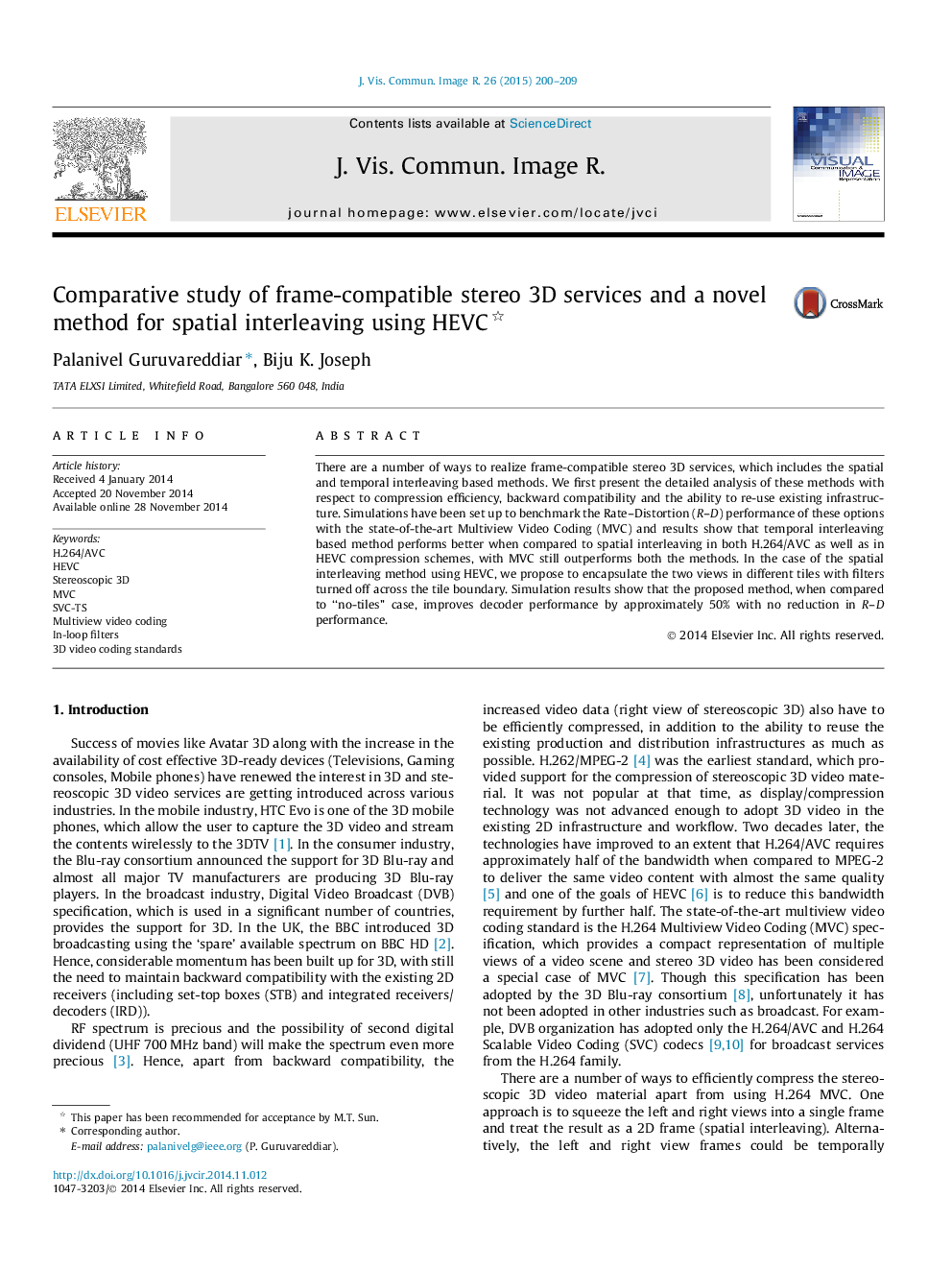| Article ID | Journal | Published Year | Pages | File Type |
|---|---|---|---|---|
| 6938569 | Journal of Visual Communication and Image Representation | 2015 | 10 Pages |
Abstract
There are a number of ways to realize frame-compatible stereo 3D services, which includes the spatial and temporal interleaving based methods. We first present the detailed analysis of these methods with respect to compression efficiency, backward compatibility and the ability to re-use existing infrastructure. Simulations have been set up to benchmark the Rate-Distortion (R-D) performance of these options with the state-of-the-art Multiview Video Coding (MVC) and results show that temporal interleaving based method performs better when compared to spatial interleaving in both H.264/AVC as well as in HEVC compression schemes, with MVC still outperforms both the methods. In the case of the spatial interleaving method using HEVC, we propose to encapsulate the two views in different tiles with filters turned off across the tile boundary. Simulation results show that the proposed method, when compared to “no-tiles” case, improves decoder performance by approximately 50% with no reduction in R-D performance.
Related Topics
Physical Sciences and Engineering
Computer Science
Computer Vision and Pattern Recognition
Authors
Palanivel Guruvareddiar, Biju K. Joseph,
